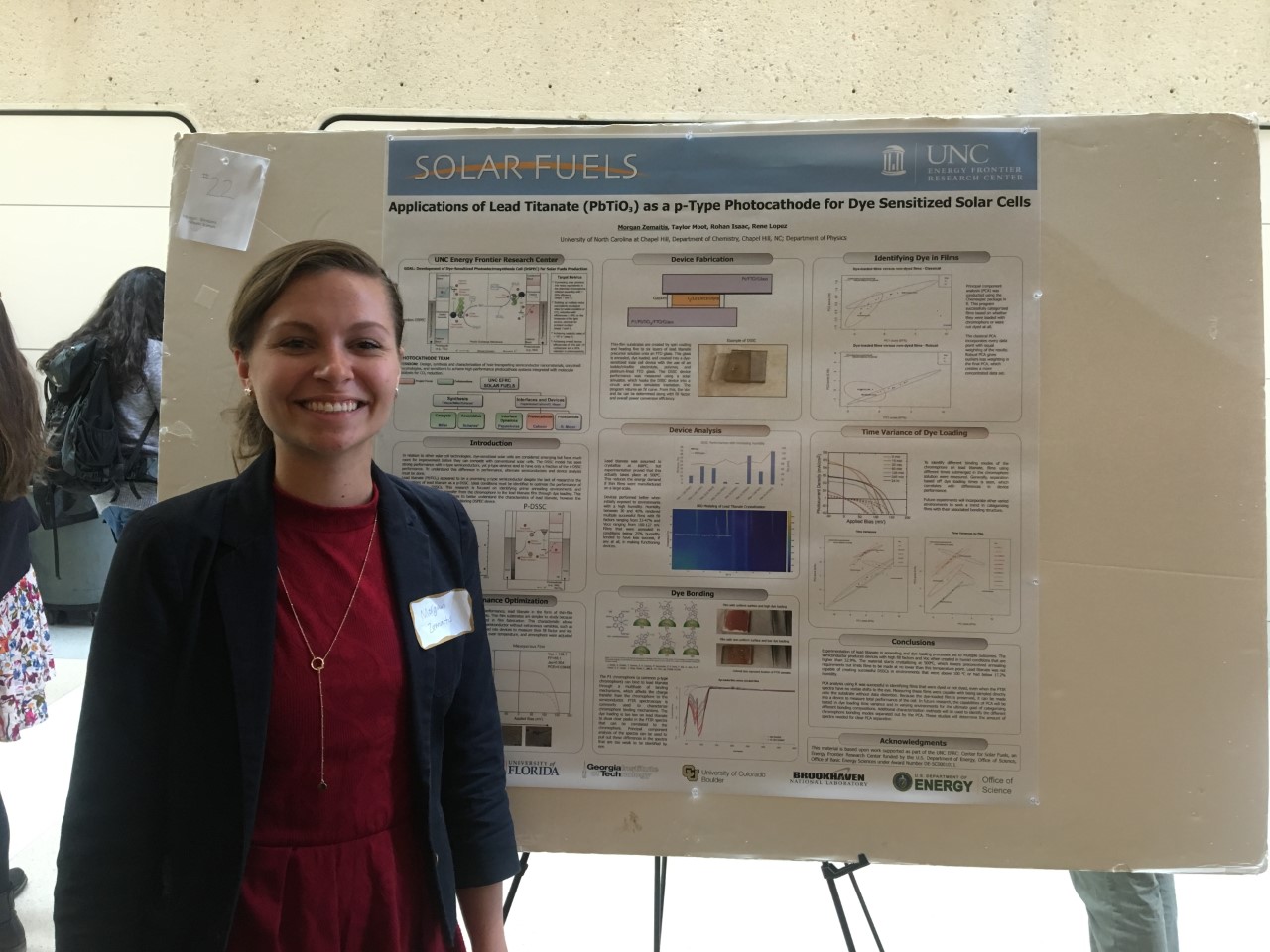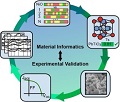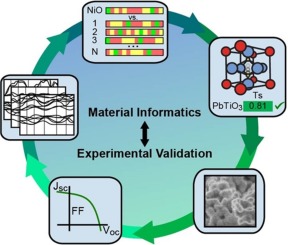
Morgan ZemaitisB.S. Environmental Science, 2017 |

|
Contributing Author


Materials informatics is a rapidly emerging data- and knowledge-driven approach for the identification of novel materials for a range of applications, including solar energy conversion. Despite significant experimental effort, the development of highly efficient, stable, and cost-effective photovoltaic materials remains a challenging scientific problem. The quest for precisely defined semiconductor properties revolves around an immensely broad landscape of structural parameters. Here, we have resolved this challenge by applying material informatics to design a novel photocathode material for dye-sensitized solar cells (DSSCs). By conducting a virtual screening of 50,000 known inorganic compounds, we have identified lead titanate (PbTiO3), a perovskite, as the most promising photocathode material. Notably, lead titanate is significantly different from the traditional base elements or crystal structures used for photocathodes. The fabricated PbTiO3 DSSC devices exhibited the best performance in aqueous solution, showing remarkably high fill factors compared to typical photocathode systems. The results highlight the pivotal role materials informatics can play in streamlining the experimental development of materials with the desired properties.